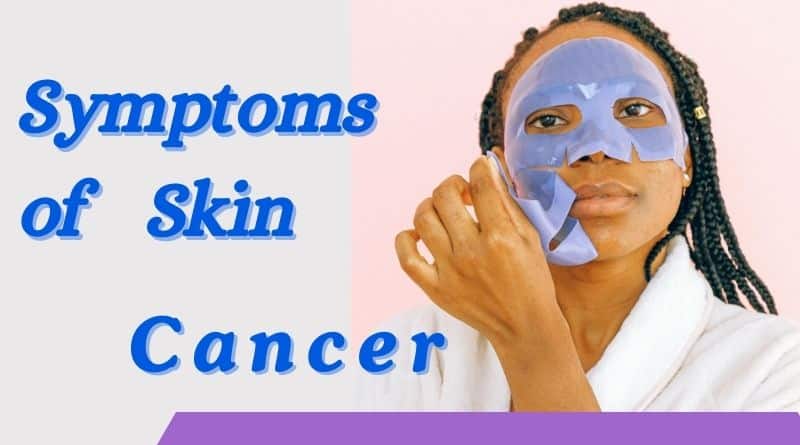What Are the Symptoms of Skin Cancer?
Symptoms of Skin Cancer: A Comprehensive Guide
Skin cancer is a prevalent form of cancer, but early detection can significantly improve treatment outcomes. Recognizing the early signs and symptoms of skin cancer is crucial for timely diagnosis and effective treatment.
Skin Cancer: What Is It and Its Types
Before the symptoms, it would be best to know what skin cancer is first. Skin cancer is the unregulated growth of abnormal skin cells; these cells sometimes may group together, forming tumors that are cancerous or non-cancerous. The three major types of skin cancer are as follows:
1. Basal Cell Carcinoma (BCC): The most common and least dangerous form; this usually shows up in the form of a small shiny bump or nodule on the skin.
2. Squamous Cell Carcinoma: This is rarer, though more likely to spread. A patch or sore which has a red, scaly appearance is the general appearance.
3. Melanoma: This is the most serious form of skin cancer, and it often resembles a mole that has changed in size, shape, or color.
General Signs of Skin Cancer:
Though there may be variation between the symptoms for different types, here are some generalized signs:
- New Growths or Sores: Any new growth, bump, or sore that hasn’t healed in a few weeks must be shown by a doctor.
- Changes in Existing Moles or Spots: Be aware of any change in the size, shape, color, or texture of existing moles or skin spots.
- Itching or Pain: Continual itching, tenderness, or pain in a mole or spot.
- Bleeding or Crusting: If a mole or spot bleeds or oozes and crusts, seek help right away.

Symptoms of Basal cell carcinoma (BCC):
BCC is the most common variant of skin cancer, but it is also the least aggressive type and very seldomly spreads. BCCs always seem on sun-exposed areas of the body, such as the face, neck, and arms; critical symptoms include:
1. Shiny Bumps: A pearly or waxy bump that is either white, pink or even flesh-colored in color.
2. Open Sores: A sore that bleeds, oozes, or crusts and stays open for a long time—for several weeks.
3. Red Patches: Flat, red patches that sometimes might feel itchy or painful.
4. Scar-like Areas: White, yellow, or waxy areas of skin with poorly defined borders that resemble a scar.
Symptoms of Squamous Cell Carcinoma:
While SCCs are less frequent than BCCs, the opportunity they might spread to various parts of the body is higher. They primarily arise in sun-exposed skin areas but can also happen in any other area. The following symptoms should be monitored:
1. Scaly red patches: Persistent scaly red patches that bleed or crust
2. Open sores: Sores that do not heal or heal and then reappear.
3. Raised Growths: Wart-like growths that are sometimes crusty or bleed.
4. Thickened Skin: Skin thickening or rough patches that may feel like a wart or a horn.
Symptoms of Melanoma:
Melanoma is the deadliest form of skin cancer; it spreads fast to other parts of the body. Therefore, it is more curable when detected early. The ABCDE rule provides a useful guide when identifying possible melanomas:
1. Asymmetry (A): One half of the mole does not match the other half.
2. Border (B): The edges of the mole are irregular, ragged, or blurred.
3. Color (C): The color of the mole is not uniform and may include shades of brown, black, pink, red, white, or blue.
4. Diameter (D): The mole is larger than 6mm (about the size of a pencil eraser), although melanomas can be smaller.
5. Evolving (E): The mole is getting larger in size, shape, or color.
Other signs of melanoma include:
- New, unusual growths: Any new moles or skin growths.
- Sores that do not heal: Persistent sores or lesions that do not heal.
- Spreading pigment: Color from the border of a mole reaching the surrounding skin.
- Itching, tenderness, or pain: Any new sensations in a mole or skin growth should be checked.
Lesser-Known Symptoms
While the symptoms above are the most prevalent, there are other symptoms of skin cancer, less common in nature, to be taken into consideration:
- Pigmented Lesions: Dark spots under the nails, on the palms of the hands, or on the soles of the feet sometimes indicate melanoma.
- Mucous Membranes: Changes in melanoma can be mirrored in the mucous membranes, such as inside the mouth, nose, or genitals.
- Fast-Growing Lesions: Any lesion that grows rapidly in size should be evaluated by a doctor.
- Satellite Lesions: Small spots or lesions that occasionally appear around the edge of a mole may indicate that the melanoma is spreading.
Prevention Tips:
While recognizing the symptoms of skin cancer is quite important, prevention remains the most essential. Follow these tips to lower your risk of skin cancer:
- Apply Sunscreen: Use broad-spectrum sunscreen with at least SPF 30, even on cloudy days.
- Avoid Peak Sun Hours: The UV rays are strongest from 10 a.m. until 4 p.m., and during this particular time of the day, stay out of the sun.
- Wear Protective Clothing: Long-sleeved shirts, hats, and dark glasses can all help shield you from the dangerous effects of UV.
- Avoid Tanning Beds: Tanning beds will radically multiply your risk of skin cancer.
- Regular Skin Checks: Do regular self-examinations and have an annual skin examination with a dermatologist.
When to See a Doctor
If any of these symptoms are observed, the skin cancer screening must be attended immediately by a doctor. Early detection can make a big difference in treatment and prognosis regarding skin cancer.